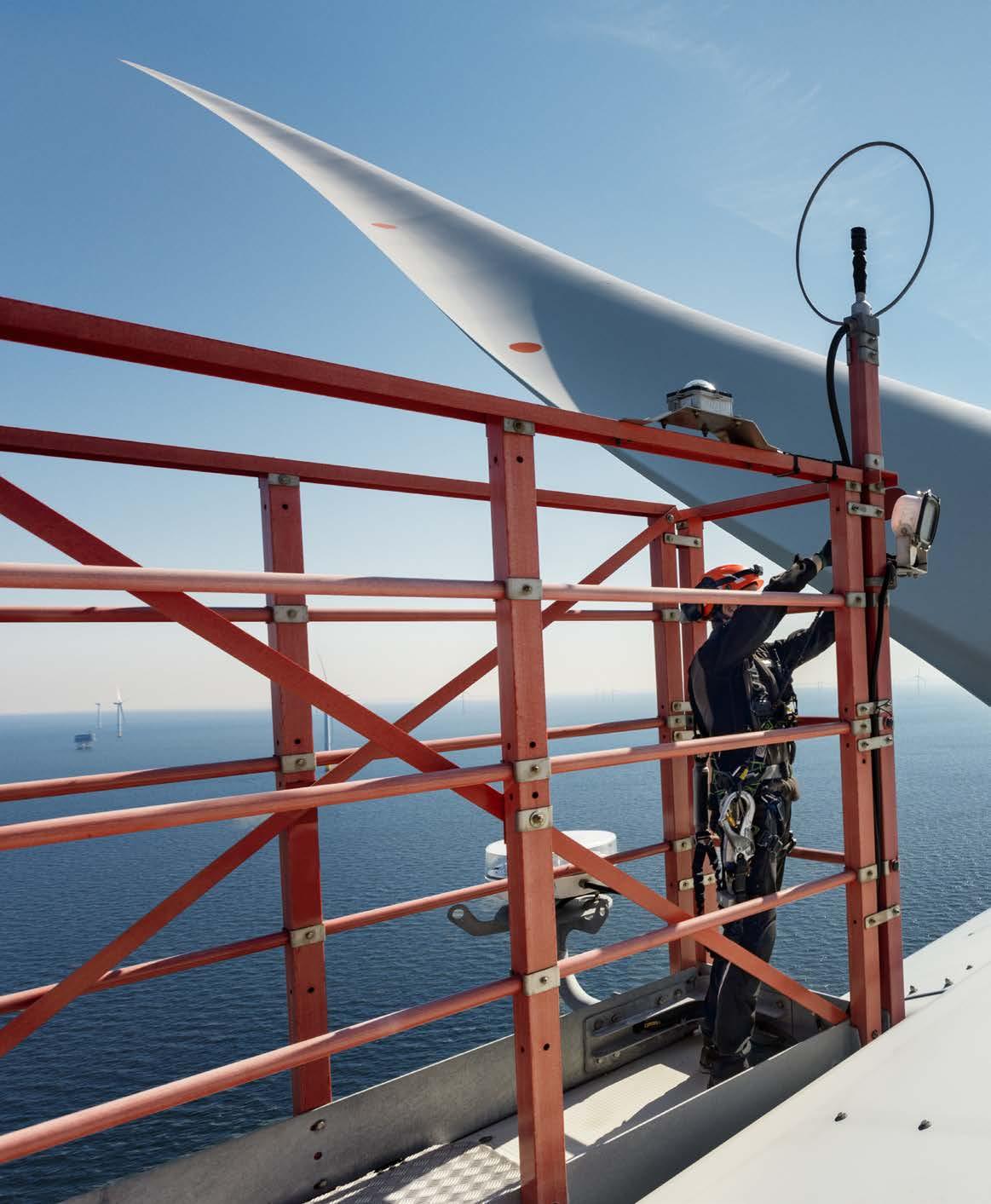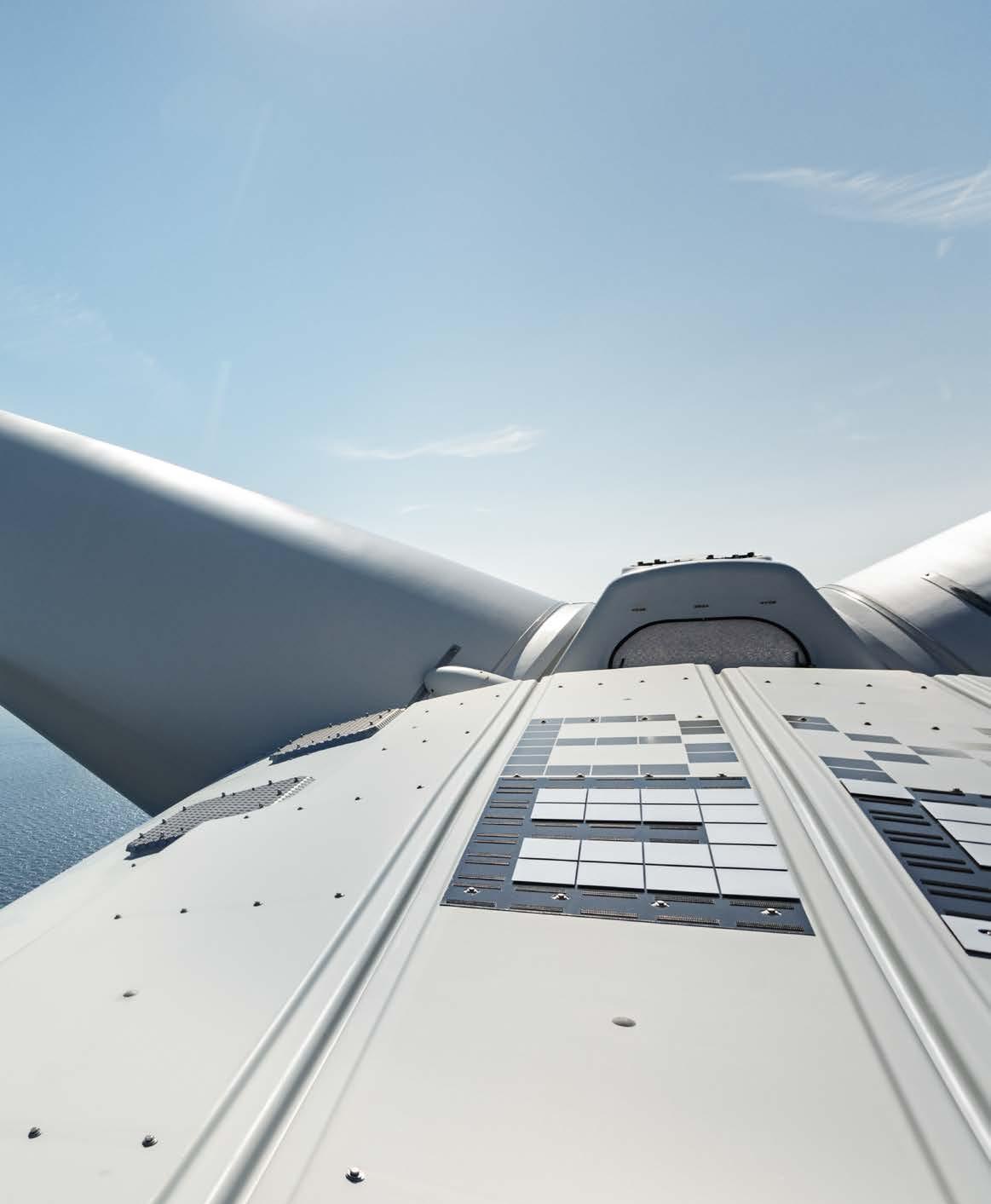
7 minute read
Divide and conquer
ACER has recommended spli ing Germany's single bidding zone into a number of different bidding zones electricity markets that the EU must meet its 70% cross-zonal capacity target by 2025 in order to boost the amount of power that can be shared between countries.
“It really is a no-brainer to increase interconnection and the capacity for trade. The crisis has shown that interconnection is really valuable, as are shared resources,” says Pollitt from Cambridge University.
He adds that the Commission should have more oversight of interconnection and grid targets, plus each country’s energy and climate plans, known as NECPs, should be scrutinised more closely to make sure that interconnection is made a priority.
NECPs are due to be updated and assessed over the course of the next 12 months, as governments have to demonstrate how they will meet the raft of new and updated energy and climate targets that have recently been written into EU law.
Across The Channel
The United Kingdom is also reviewing its market rules. In March 2023 the government published the results of a consultation that it intends to use in the ongoing reform process.
Surveyed replies broadly supported changing the rules to provide better protection from high energy costs and easier access to more renewable energy capacity but there was little consensus over the best way to do it.
The vast majority of survey responders supported the UK’s target of fully decarbonising the grid by 2035 but the replies did not agree on whether the government should consider splitting the wholesale market or implementing nodal or zonal pricing.
There were enough dissenting voices for the government to rule out several options though, including local imbalance pricing, decentralised reliability
Point of view
UK advisors do not see the need for separate markets
POLICY
Governments bid to x auction design
There is no getting away from the fact: 2022 was a terrible year for renewable energy auctions in Europe. Lawmakers pressed for a rapid buildout of clean energy to replace the loss of Russian oil and gas resulting from the war in Ukraine. But as auction after auction yielded disappointing results it was clear investors were not playing ball.
The auctions’ failure to deliver much-needed renewable energy capacity has put industry groups on alert and led to questions over whether a current focus solely on economic criteria is too restrictive. To meet Europe’s climate targets, “We need to get the auctions lled,” says Christoph Zipf of the industry body WindEurope.
Auctions are certainly not being lled. In Italy in 2022, the year kicked o with more than 3.3 gigawatts (GW) under the hammer. This was capacity left over from seven previous auctions rounds held under a
2019 decree called FER1. According to press reports, only 306 megawatts (MW) of utility-scale solar and wind were handed out, marking the eighth Italian contest in a row that was undersubscribed.
Italy would go on to hold another lacklustre auction later in the year, o ering more than 1.9 GW and securing just over 413 MW.
Soon after, Spain held a technology-neutral auction for 3.3 GW and awarded just 50 MW. The asco came after the Spanish government failed to attract a single bid for 220 MW of concentrated solar power capacity, despite having a national integrated energy and climate plan that calls for 2.5 GW of the technology by 2025.
It was not just Mediterranean countries that failed to meet auction expectations. December 2022 saw Austria putting almost 900 MW on the block but awarding a little over 444 MW. Croatia, France, Greece and Poland also held undersubscribed auctions.

Waning Interest
The lack of response primarily a ected the onshore wind and solar capacity. It seems developers were put o entering the tenders due to a combination of longstanding permitting challenges and overly aggressive cost assumptions on the part of lawmakers.
Waning interest in government auctions is a problem because they are seen as the main route for European Union (EU) member states to secure the renewable energy capacity that Europe needs to accomplish its climate goals.
Having largely phased out early subsidy schemes such as feed-in tari s, European governments now predominantly procure renewable energy through reverse auctions that often use a contracts for di erence or CfD (page 32) pricing model.
CfDs encourage clean energy investment by giving investors access to a secure, xed, long-term revenue stream. At the same time, the generator is free to sell any electricity produced outside of its CfD arrangement. Such sales, for instance through spot markets or corporate power purchase agreements (PPAs), may be more pro table than CfDs but are also more volatile.
In recent years, renewable energy groups have tended to bid low in government auctions with the aim of securing a CfD that can act as a basic revenue stream, to be later topped up with other sales.
Rising Costs
This has helped countries such as Portugal to achieve record-low rates for solar energy and has encouraged authorities to keep reducing the strike prices below which auction participants are expected to bid. The situation works well as long as wind and solar energy keep getting cheaper to produce, but this did not happen in 2022.
Instead, supply chain problems and in ationary pressures saw the cost of onshore wind rise 7% and xed-axis solar climb 14% year on year, according to June 2022 gures from the analyst rm BloombergNEF. “These developments led to the average wind turbine being 30% more expensive than it was two years ago,” adds Zipf.
Despite the rising cost, renewables remained far cheaper than fossil fuelled generation last year—but it no longer made nancial sense for many renewable energy developers to bid for the contracts on o er in European auctions. In Spain, the authorities do not seem fazed, despite having handed out less than 6.4 GW of the roughly 10.1 GW o ered through auctions in 2021 and 2022.
“The result of these auctions does not a ect the course set out in the National Integrated Energy and Climate Plan,” says Xira Valdés Villazón of the Span- ish Ministry for the Ecological Transition and the Demographic Challenge. “Other technologies, such as [solar] self-consumption, are developing more quickly than expected and the government has room to secure a perfectly manageable renewable electricity system with lower prices than now,” she adds.
Market Options
Figures from APPA Renovables, a Spanish renewable energy association, show the country installed a record 8.3 GW of renewable capacity in 2022. Plus, the Spanish administration has already permitted 28 GW of renewable energy this year, giving it more than enough capacity to meet its annual targets, Valdés says.
What is happening instead is that project owners are steering clear of government auctions. “Developers believe they can get a better return for their investments if they sell their energy directly on the market [merchant] or through PPAs,” says Valdés.
The auction calendar is there to provide certainty for investors. “But that does not mean it is necessary to allocate all the installed capacity in each auction,” she adds.
Capacity that is not awarded in an auction can be carried over to the next one, she adds, and the Ministry can opt to add more auctions to the calendar if needed—something that happened in Spain in 2021 and Italy in 2022. “For the energy transition, we need to install renewables irrespective of how they make money,” says Valdés. “The auctions the government organises look to provide certainty to investors without preventing other ways of generating revenues.”
Not everyone buys into this thinking, with the Spanish business paper El Economista warning in November 2022 that Spain’s auction problems would see the country failing to meet most of the clean energy objectives it had set for 2030. Rolling spare capacity over from one auction to the next may help overcome a temporary mismatch, “But if you don’t solve the underlying problems, it just gets ridiculous,” Zipf says.
Furthermore, even if Spain can meet its renewable energy installation targets thanks to plants funded through merchant sales and corporate PPAs, that does not necessarily mean other EU markets could follow suit. In terms of PPAs, “the Spanish market is
Targets threatened WindEurope's Giles Dickson (right) believes renewables targets will be missed if auctions are le unfulfilled established and works well,” says Zipf. “Some other markets have hardly seen any PPAs yet.”
New Measures
Although a corporate appetite for clean energy supplies is leading to more and more PPA activity, WindEurope has told the European Commission that a credible auction scheme is essential to the energy transition.
The Commission has taken steps to improve matters. Its REPowerEU strategy, rushed out after Russia invaded Ukraine in early 2022, aims to reduce the EU’s reliance on Russian fossil fuels by boosting clean energy output.
One of the main ways it aims to do this is by simplifying and speeding up project permitting, which has long been recognised as a major problem for European renewables deployment. “A wind turbine project onshore takes on average about ve years to get a permit in Europe, which of course is too long,” says Zipf.
Red tape was seen as dragging down auction results even before pricing became a serious issue. A case in point is Italy’s FER1 auctions, where bidders were deterred by slow-moving bureaucracy. “Italy is Europe’s prime example for how bad permitting leads to low renewables build-out,” WindEurope boss Giles Dickson said in a February 2022 press note.

“Neither the EU’s renewables target for 2030 nor Italy’s national targets for wind energy count for anything if there aren’t enough permitted projects that can bid into the auctions,” he said. “The latest undersubscribed auction shows once again that Italy urgently needs to x its permitting arrangements. No other European country has more problems in permitting new wind farms than Italy.”
Permitting Improvements
The REPowerEU package aims to overcome such challenges through a package of measures, such as setting a two-year permitting deadline for green eld projects and one year for repowering work. The regulation should also help permitting procedures become more robust, so approvals are harder to overcome through legal challenges.
“The European Commission has now said the expansion of wind energy is a matter of overriding pub-

FINANCE
Finding the most efficient way to pay for the energy transition is not an easy affair—but lawmakers worldwide seem to be increasingly converging on contracts for difference as the mechanism of choice to fund emerging technologies











